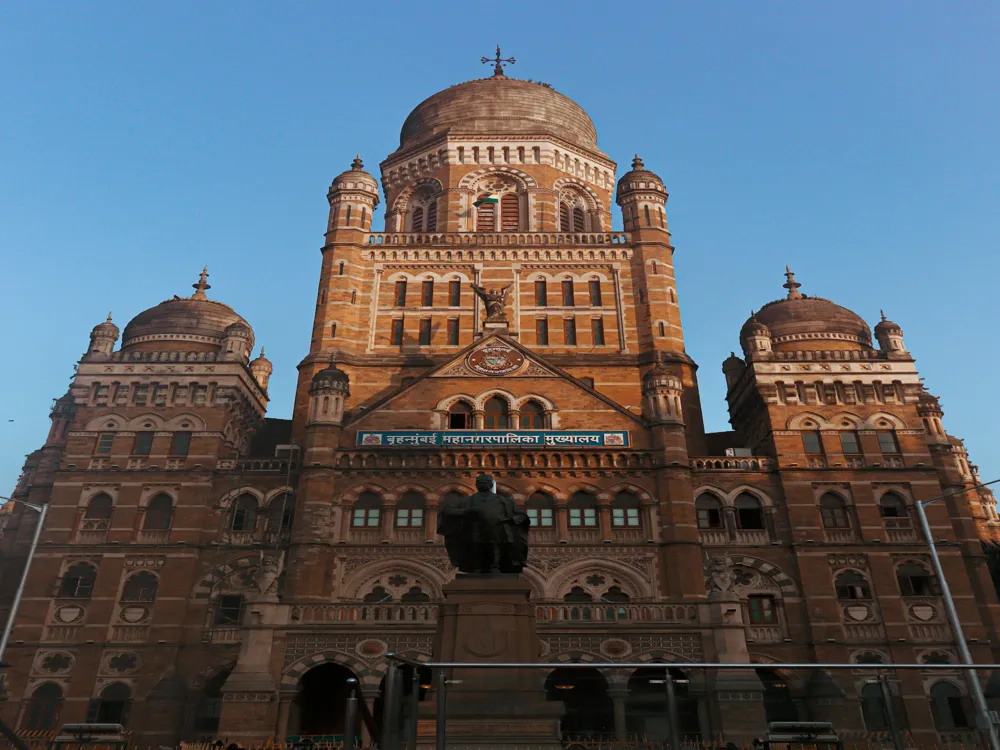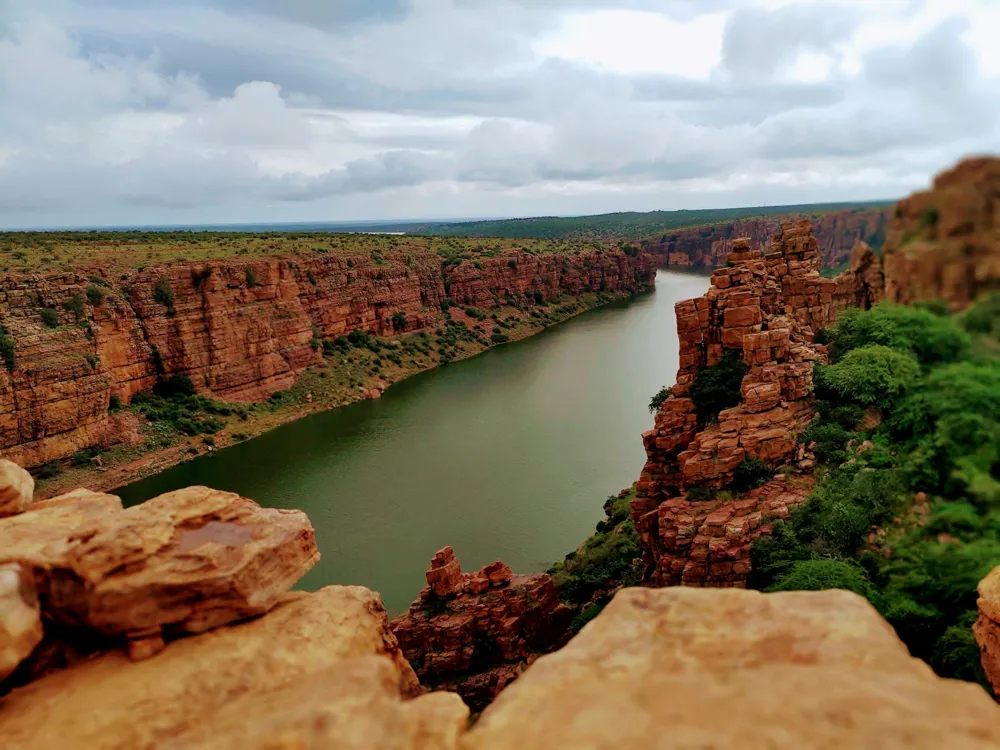The Hanuman Statue at Mounagiri in Anantapur, Andhra Pradesh, is a magnificent tribute to the Hindu deity Lord Hanuman, known for his unwavering devotion to Lord Rama. This awe-inspiring statue, nestled in the serene landscape of Mounagiri, stands as a symbol of strength, perseverance, and devotion. Its location in Anantapur, a region steeped in history and spirituality, adds to the statue's significance, drawing visitors from all over to witness its grandeur. The statue's towering presence is not just a testament to religious sentiment but also a beacon of cultural and historical importance. The choice of Hanuman, a central figure in the Indian epic Ramayana, reflects the deep-rooted cultural narratives and beliefs prevalent in the region. The statue's construction involved skilled artisans and craftsmen who meticulously worked to bring the deity's image to life, blending traditional artistry with modern techniques. Visitors to the Hanuman Statue at Mounagiri are greeted by its majestic stature, which emanates a sense of peace and spiritual energy. The surrounding area of Mounagiri, with its natural beauty and tranquil ambiance, complements the spiritual experience. The statue has become a focal point for religious gatherings, cultural events, and a symbol of communal harmony, showcasing the rich tapestry of Indian spirituality and heritage. The architecture of the Hanuman Statue at Mounagiri is a remarkable feat, blending artistic brilliance with engineering prowess. Standing tall against the backdrop of the Mounagiri hills, the statue is a marvel of design and craftsmanship. Its construction involved advanced architectural techniques, ensuring stability and durability while capturing the intricate details of Hanuman's portrayal. The statue's design follows traditional iconography, depicting Hanuman in a powerful yet serene posture. The use of high-quality materials and advanced sculpting methods has resulted in a lifelike representation, with detailed facial expressions and intricate adornments. The statue's scale and proportion are in perfect harmony with its surroundings, creating a visually stunning and spiritually uplifting landmark. The architectural planning also took into consideration the environmental aspects, ensuring that the statue blends seamlessly with the natural landscape. The use of local materials and sustainable practices in its construction reflects a commitment to ecological preservation. The statue, therefore, stands not just as a religious icon but also as a symbol of harmony between human creativity and nature. Visitors are advised to dress conservatively, respecting the religious nature of the site. Comfortable attire suitable for walking and climbing stairs is recommended. It's important to observe and respect local customs and traditions. Participate in rituals if interested, but always with reverence and respect. While photography is allowed, visitors should be mindful of any restrictions, especially during religious ceremonies or in specific areas of the site. It's advisable to carry water and light snacks, but ensure to keep the area clean and dispose of waste responsibly. Plan your travel and accommodation in advance, especially during peak seasons or religious festivals, as the area can get crowded. The Hanuman Statue at Mounagiri is accessible by various modes of transportation. The nearest airport is in Anantapur, from where taxis or buses can be taken to reach Mounagiri. For those traveling by train, Anantapur railway station is the closest, with several trains connecting to major cities. Local buses and taxis are also available for easier access to the statue. Visitors can opt for guided tours, which often include transportation to and from the site. Read More:Overview of Hanuman Statue at Mounagiri, Anantapur, Andhra Pradesh
Architecture of Hanuman Statue at Mounagiri
Tips When Visiting Hanuman Statue at Mounagiri
Dress Appropriately
Respect Local Customs
Photography Guidelines
Food and Beverages
Travel and Accommodation
How to Reach Hanuman Statue at Mounagiri
Hanuman Statue at Mounagiri
Anantapur
Andhra Pradesh
NaN onwards
View anantapur Packages
Weather :
Tags : Monument
Time Required : 3 Hours
Planning a Trip? Ask Your Question
Anantapur Travel Packages
View All Packages For Anantapur
Top Hotel Collections for Anantapur

Private Pool

Luxury Hotels

5-Star Hotels

Pet Friendly
Top Hotels Near Anantapur
Other Top Ranking Places In Anantapur
View All Places To Visit In anantapur
Faq on Anantapur
What is the significance of the Hanuman Statue at Mounagiri, Anantapur?
The Hanuman Statue at Mounagiri, Anantapur, holds great cultural and religious significance. It represents devotion, strength, and courage, as Hanuman is a revered figure in Hindu mythology.
How tall is the Hanuman Statue at Mounagiri, Anantapur?
The Hanuman Statue at Mounagiri, Anantapur, stands tall at [insert height here] feet, making it one of the largest Hanuman statues in the region.
When was the Hanuman Statue at Mounagiri, Anantapur, constructed?
The construction of the Hanuman Statue at Mounagiri, Anantapur, was completed in [insert year here], after years of planning and execution.
Who built the Hanuman Statue at Mounagiri, Anantapur?
The Hanuman Statue at Mounagiri, Anantapur, was built by [insert name or organization], dedicated to spreading the message of devotion and strength embodied by Lord Hanuman.
Is the Hanuman Statue at Mounagiri, Anantapur, open to visitors?
Yes, the Hanuman Statue at Mounagiri, Anantapur, is open to visitors throughout the year. It serves as a pilgrimage site and a tourist attraction.
View anantapur Packages
Weather :
Tags : Monument
Time Required : 3 Hours
Planning a Trip? Ask Your Question
Anantapur Travel Packages
View All Packages For Anantapur
Top Hotel Collections for Anantapur

Private Pool

Luxury Hotels

5-Star Hotels

Pet Friendly
Top Hotels Near Anantapur
Other Top Ranking Places In Anantapur
Faq on Anantapur
What is the significance of the Hanuman Statue at Mounagiri, Anantapur?
The Hanuman Statue at Mounagiri, Anantapur, holds great cultural and religious significance. It represents devotion, strength, and courage, as Hanuman is a revered figure in Hindu mythology.
How tall is the Hanuman Statue at Mounagiri, Anantapur?
The Hanuman Statue at Mounagiri, Anantapur, stands tall at [insert height here] feet, making it one of the largest Hanuman statues in the region.
When was the Hanuman Statue at Mounagiri, Anantapur, constructed?
The construction of the Hanuman Statue at Mounagiri, Anantapur, was completed in [insert year here], after years of planning and execution.
Who built the Hanuman Statue at Mounagiri, Anantapur?
The Hanuman Statue at Mounagiri, Anantapur, was built by [insert name or organization], dedicated to spreading the message of devotion and strength embodied by Lord Hanuman.
Is the Hanuman Statue at Mounagiri, Anantapur, open to visitors?
Yes, the Hanuman Statue at Mounagiri, Anantapur, is open to visitors throughout the year. It serves as a pilgrimage site and a tourist attraction.





















